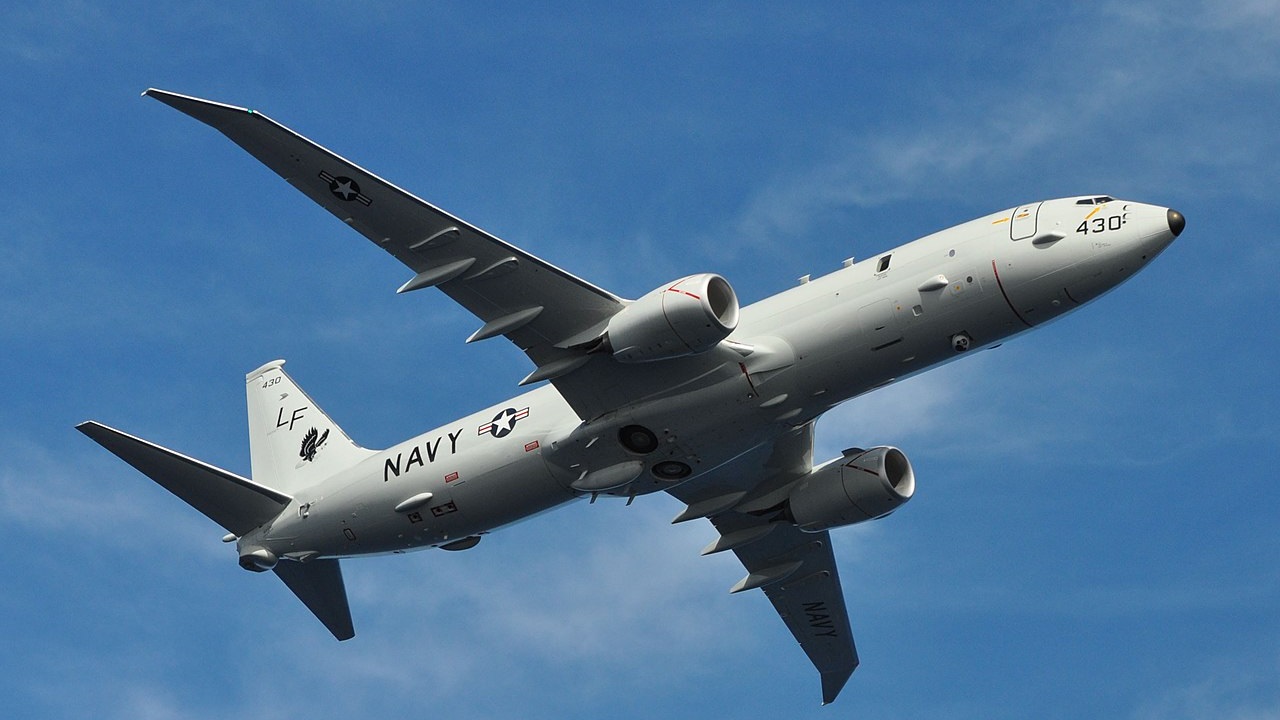While many think of the P-8 Poseidon as a plane built to hunt submarines, she has many other uses that are now on full display. Here is how one expert explained them: In the summer of 2020, during the first months of the pandemic, I was waiting out quarantine in Boise, Idaho. One day, on my daily run, a U.S. Navy Boeing P-8 Poseidon flew by, at low altitude, right over Boise State University. The P-8 flew by again a few minutes later, following the same course. A few minutes later, again the P-8 passed. Clearly, tests or training were being conducted. I’d never seen a P-8 before – and I certainly didn’t expect to see my first in Boise, 500 miles from the nearest coastline.
The P-8 Poseidon serves as a maritime patrol aircraft, conducting anti-submarine warfare; anti-surface warfare; and intelligence, surveillance, and reconnaissance missions. Hence my surprise to see one in Idaho, where there are no submarines or surface warships. Based on a Boeing 737, which you’ve probably flown on to take your family vacation, the P-8 is armed with torpedoes, Harpoon anti-ship missiles, and other weapons. The modified Boeing can also deploy sonobuoys – or coordinate with UAVs, like the Northrop Grumman MQ-4C Triton.
Leading Up to Development of the P-8
The P-8 was developed to replace the P-3 Orion. The P-3 served venerably for nearly sixty years. First flown in 1959 and introduced in 1962. The P-3 was not retired from active duty until 2020.
In replacing the P-3, the Navy sought an airframe with cheaper operating and support costs. The initial competition to develop a replacement commenced in the 1980s when Lockheed was awarded a contract to develop the P-7, a four-prop aircraft, externally similar to the P-3. Yet, the contract was canceled in the 90s, before much headway was made. Replacement plans were put on hold, and the P-3 soldiered on as the Navy’s workhorse through the 90s and past the turn of the century.
A second competition to replace the P-3 began in 2000. Boeing won, beating out Lockheed and BAE. Production, modifying the 737 into a warfighter, commenced in 2009 when the P-8 made its debut flight. The finished product is quite similar to the 737, albeit with some notable differences. For one, the P-8 is longer than the 737. The P-8 also enjoys a strengthened fuselage, enabling low-altitude operations. The P-8 has raked wingtips, rather than the blended winglets found on the 737. And to power the P-8’s more sophisticated electronic equipment, the plane has a 180 kVA electric generator on each engine, whereas the 737 gets by with 90 kVA generators. And of course, the P-8 is not equipped to carry the 737’s 188 passengers. Instead, the P-8 houses two pilots in the cockpit, and five operators in the fuselage, sitting at stations mounted in a sideways row along the port side of the cabin.
The P-8 Gets Off the Ground
The P-8 has become especially relevant as China, currently amidst one of world history’s greatest Naval expansions, pushes out adventurously into the South China Sea. While China builds man-made islands, makes territorial claims, and generally asserts herself, the U.S. has begun paying special attention to the region. Actively conducting surveillance, gathering intelligence, and deterring China, the U.S. Navy turns to the P-8. In fact, the U.S. is exporting the P-8 to regional allies, like Australia, South Korea, and India, who also have a vested interest in containing China. Resultantly, the P-8 has been appearing in the mainstream news regularly – and may just one day find itself on the frontlines of the 21st century’s most significant conflict.
Harrison Kass is a Senior Defense Editor at 19FortyFive. An attorney, pilot, guitarist, and minor pro hockey player, he joined the US Air Force as a Pilot Trainee but was medically discharged. Harrison has degrees from Lake Forest College, the University of Oregon, and New York University. He lives in Oregon and regularly listens to Dokken.

